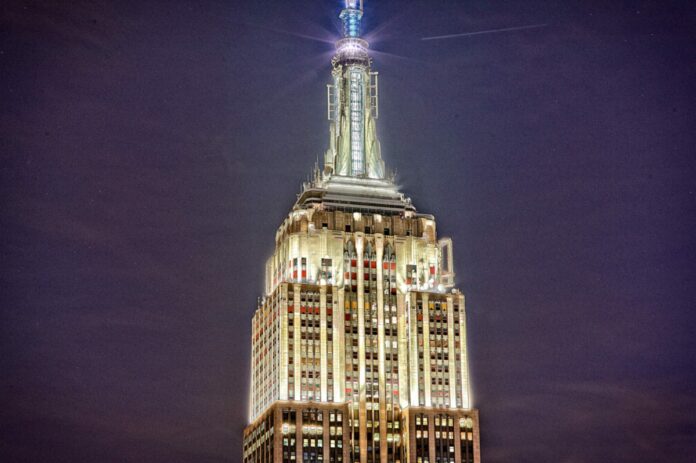New York is home to many different design trends, helping to make it one of the most unique real estate empires in the world. One of the city’s most incredible architectural designs, specifically Manhattan, is Art Deco, or Deco. This design choice can be seen far and wide throughout NYC and boasts a unique history you can’t find anywhere else.
The Beginning of Art Deco
Art Deco first began around World War I in France. What started as a new trend quickly rose to influence design around the world. Art Deco affected movie theaters, cars, fashion, vacuum cleaners, and most notably, buildings and furniture. Art Deco became the go-to style for some time, effectively taking over local and eventually global markets. The name “Art Deco” is derived from Paris’ 1925 art exhibit, “Exposition Internationale des arts decoratifs et industriels modernes.”
The exhibit modeled pieces that were a unique blend of rich materials and craftsmanship, symbolizing luxury, social, and tech progress – it was a signal of hope. Art Deco’s stylistic elements are derived from many different sources, from Cubism and Ballets Russes to art in countries like Persia and China. It is a collective melting pot of many different styles and element choices, unlike anything the world had seen before. A big part of localizing the movement was bringing it to the states, more specifically New York City.
From the 1920s until the 1930s, the famed Chrysler Building, along with a set of other skyscrapers, were built in the city. Art Deco would eventually fizzle out in relevance as time passed and World War II began. With new materials, wants, and needs, Art Deco was no longer the leading design choice as it had transitioned to a more modern option, but the one-of-a-kind buildings, history, and inspiration remain. Though, that’s not to say that everyone loved the design themes at the time of being built. Some criticized the Chrysler Building intently, stating that it was unoriginal and inane.
Where to See Art Deco In NYC
Plenty of iconic buildings in New York City boast the Art Deco design profile. Chrysler Building in Turtle Bay stands at over 1,000 feet tall and was once considered the tallest building in the world for just under a year after being built. In 1978, the building was designated a New York City landmark.
Another building designed to model Art Deco was the American Radiator Building, aka the American Standard Building. This building was constructed between 1936 and 1937 and joined the Chrysler Building as an early Art Deco installation. American Radiator Building is located near Bryant Park in Midtown Manhattan. The unique building combines Art Deco with gothic themes giving it a distinctive dark but elegant appearance.
General Electric Building, located on Lexington Avenue in Midtown Manhattan, is 640 feet tall. Art Deco significantly influences the top of the building, also paired with gothic elements. The combination results in a unique and extravagant building topper fitted with lightning bolts and symbolism of the electrical nature of the building.
Perhaps the most iconic building in New York City, the Empire State Building, is another example of Art Deco in the city. This building was built between 1930 and 1931, only shortly after the Chrysler Building was constructed. At 1,250 feet, this Midtown South building is well-regarded for its classic Art Deco elements.
Where Art Deco is Available Now
Art Deco buildings are not limited to commercial in New York City. Many residential buildings have taken hints from the style since their inception in the 1930s. Residential buildings with Art Deco elements in NYC include:
The Cocoa Exchange – 1 Wall Street, New York, NY 10005
70 Pine Street – 70 Pine Street, New York, NY 10270
100 Barclay – 100 Barclay Street, New York, NY 10007
El Dorado – 300 Central Park West, New York, NY 10024
The Ardsley – 320 Central Park West, New York, NY 10025
The Majestic – 115 Central Park West, New York, NY 10023
One-Fifth Avenue – 1 5th Avenue, New York, NY, 10003
Kylee was born and raised just outside of Sacramento in a small town full of history and charm. She stays up-to-date on the real estate market and hopes to empower hopeful buyers and sellers to make the best decisions for themselves. Kylee is particularly interested in bridging the gap for younger generations, helping them understand the power of owning and investing in real estate.



